Brain Guardians Remove Dying Neurons

Brain guardians remove dying neurons
By adolescence, your brain already contains most of the neurons that you’ll have for the rest of your life. But a few regions continue to grow new nerve cells—and require the services of cellular sentinels, specialized immune cells that keep the brain safe by getting rid of dead or dysfunctional cells.
Now, Salk scientists have uncovered the surprising extent to which both dying and dead neurons are cleared away, and have identified specific cellular switches that are key to this process. The work was detailed in Nature on April 6, 2016.
“We discovered that receptors on immune cells in the brain are vital for both healthy and injured states,” says Greg Lemke, senior author of the work, a Salk professor of molecular neurobiology and the holder of the Françoise Gilot-Salk Chair. “These receptors could be potential therapeutic targets for neurodegenerative conditions or inflammation-related disorders, such as Parkinson’s disease.”
Salk scientists show that two immune cell receptors, called Mer and Axl, are responsible for consuming dead or dysfunctional brain cells. An accumulation of dead cells (green spots) is seen in the subventricular zone (SVZ) – a neurogenic region – of the brain in a mouse lacking the receptors Mer and Axl. (Blue staining marks all cells.) No green spots are seen in the SVZ from a normal mouse. Credit: Salk Institute
More Posts from Llamaslikesciencetoo and Others
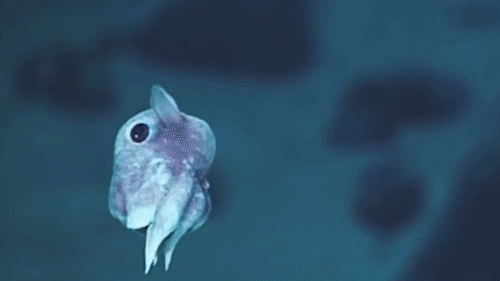



A study of Saurian morphology: Pseudosuchia (part 2)
Look at that. It’s a croc. With flippers. Yes it did actually exist.
Note to self: learn to schedule these things better. Coming back home after a long day of work to find out I had to do something with a ton of scales is NOT. AT. ALL. FUN. I’ll have to fix dem legs one day but right now I just can’t be bothered.
Edit: oh hey that sucker doesn’t look as bad as I originally had in mind.
- - -
Will Art for Science · Find me elsewhere

Mildred Dresselhaus, a professor emerita at the Massachusetts Institute of Technology whose research into the fundamental properties of carbon helped transform it into the superstar of modern materials science and the nanotechnology industry, died on Monday in Cambridge, Mass. She was 86.
Her death, at Mount Auburn Hospital, was confirmed by her granddaughter Leora Cooper. No cause was given.
Nicknamed the Queen of Carbon in scientific circles, Dr. Dresselhaus was renowned for her efforts to promote the cause of women in science. She was the first woman to secure a full professorship at M.I.T., in 1968, and she worked vigorously to ensure that she would not be the last.
In 1971, she and a colleague organized the first Women’s Forum at M.I.T. to explore the roles of women in science. Two years later she won a Carnegie Foundation grant to further that cause.
“I met Millie on my interview for a faculty job in 1984,” said Lorna Gibson, now a professor of materials science and engineering. “M.I.T. was quite intimidating then for a new female, but Millie made it all seem possible, even effortless. I knew it wouldn’t be, but she was such an approachable intellectual powerhouse, she made it seem that way.”
[…]
Dr. Dresselhaus used resonant magnetic fields and lasers to map out the electronic energy structure of carbon. She investigated the traits that emerge when carbon is interwoven with other materials: Stitch in some alkali metals, for example, and carbon can become a superconductor, in which an electric current meets virtually no resistance.
Dr. Dresselhaus was a pioneer in research on fullerenes, also called buckyballs: soccer-ball-shaped cages of carbon atoms that can be used as drug delivery devices, lubricants, filters and catalysts.
She conceived the idea of rolling a single-layer sheet of carbon atoms into a hollow tube, a notion eventually realized as the nanotube — a versatile structure with the strength of steel but just one ten-thousandth the width of a human hair.
She worked on carbon ribbons, semiconductors, nonplanar monolayers of molybdenum sulfide, and the scattering and vibrational effects of tiny particles introduced into ultrathin wires.
She published more than 1,700 scientific papers, co-wrote eight books and gathered a stack of accolades as fat as a nanotube is fine.
Dr. Dresselhaus was awarded the National Medal of Science, the Presidential Medal of Freedom (bestowed by President Barack Obama), the Kavli Prize in Nanoscience, the Enrico Fermi prize and dozens of honorary doctorates. She also served as president of the American Physical Society and the American Association for the Advancement of Science and worked in the Department of Energy in the Clinton administration.
Continue Reading.









One animal’s trash is a vampire squid’s dinner! From a larvacean into the marine snow, a vampire squid meal means it’s time to boogie!
This footage is courtesy of our partners at the Monterey Bay Aquarium Research Institute (MBARI).
Their discovery of the vampire squid’s diet was an amazing moment—read all about it in here!
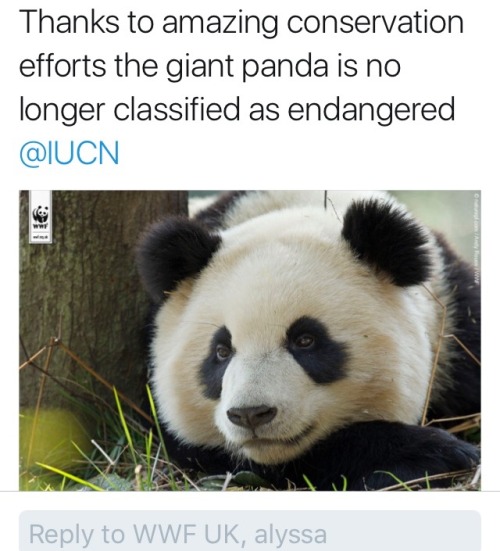
the only good news to come out of 2016







Swimming With Whale Sharks - Philippines by Tommy Schultz
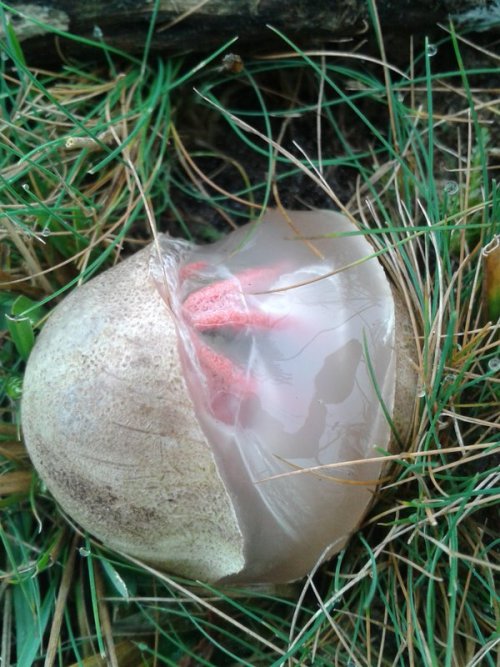
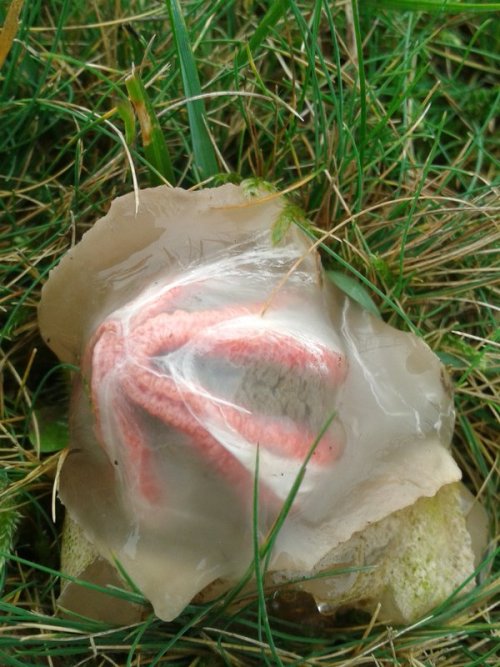
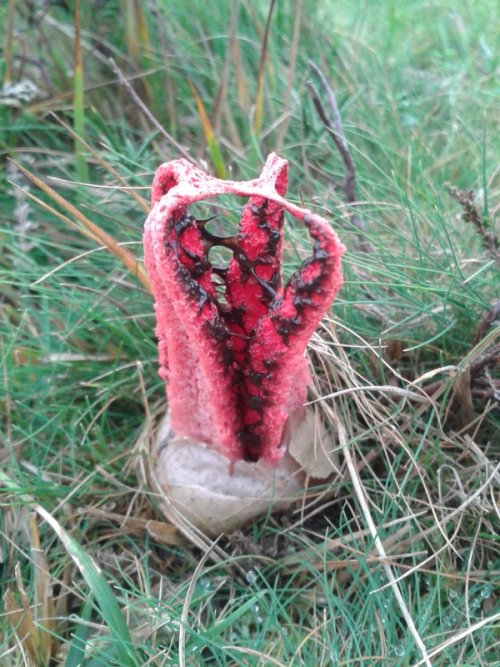
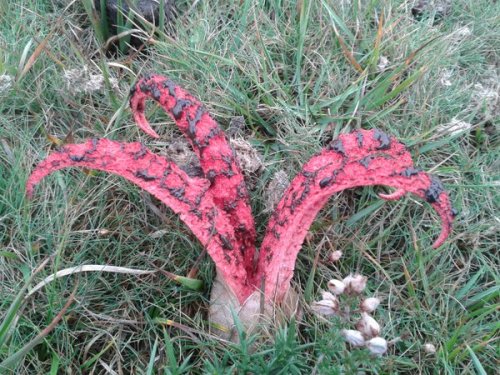
(image credit to Dan Hoare on twitter)
I ONLY JUST LEARNED ABOUT THE EXISTENCE OF THIS MUSHROOM????? WHICH ERUPTS FROM AN EGG BEFORE UNCURLING HELLISH ARMS, EXPOSING ITS STICKY MASS OF SPORES TO BE SPREAD BY FLIES ATTRACTED BY THE SCENT OF ROTTING FLESH???
Admittedly, I am easily won over by all organisms that attract flies with the scent of rotting flesh. But the octopus stinkhorn (Clathrus archeri) also has tentacles, a freaky egg stage, and blackish goop, so it’s my favorite now.
Shark Documentary: a dead shark!!
Me: oh no
Shark Documentary: something kILLED IT!!
Me: it was an orca
Shark Documentary: WHAt killed this SHARK??!
Me: orca
Shark Documentary: It was not a man!!!
Me: orca
Shark Documentary: *flips a shark upside down*
Me: ok
Shark Documentary: there are some orcas living nearby
Me: yes good
Shark Documentary: what could this mean??
Me: orcas killed the shark
Shark Documentary: did orcas kill this shark??!
Me: yes
Shark Documentary: orcas killed the shark!!
Me: fascinating




“I’m on Lord Howe Island, a tiny speck of land 300 miles off the east coast of Australia. Humans beings only got here a little over 200 years ago, and it seems the birds that nest here are still quite curious to see what’s going on.“ (Life of Birds 1998)
This is it. This is my favourite Attenborough moment.
Earth Expeditions Preview
A Closer Look at Our Home Planet

Our view from space shows our planet is changing, but to really understand the details of these changes and what they mean for our future, scientists need a closer look. Over the next six months, we’re taking you on a world tour as we kick off major new field research campaigns to study regions of critical change from land, sea and air.
You can follow the Earth Expeditions on Facebook, Twitter and their Blog.
Take a look at the eight campaigns we will explore:
CORAL (Coral Reef Airborne Laboratory)

This three-year CORAL mission will use advanced airborne instruments and in-water measurements to survey a portion of the world’s coral reefs. The mission will assess the conditions of these threatened ecosystems to better understand their relation to the environment, including physical, chemical and human factors. With a new understanding of reef condition, the future of this global ecosystem can be predicted.
OMG (Oceans Melting Greenland)

Oceans Melting Greenland (OMG) mission will pave the way for improved estimates of sea level rise by addressing the question: To what extent are the oceans melting Greenland’s ice from below? This mission will observe changing water temperatures and glaciers that reach the ocean around all of Greenland from 2015 to 2020. This year, the OMG mission will fly over the periphery of Greenland to take measurements of the heights and extents of Greenland’s coastal glaciers that reach the ocean and release expendable sensors to measure the temperature and salinity of coastal waters. The OMG field campaign will gather data that will help scientists both understand how the oceans are joining with the atmosphere in melting the vast ice sheet and to predict the extent and timing of the resulting sea level rise.
NAAMES (North Atlantic Aerosols and Marine Ecosystems Study)

About half the carbon dioxide emitted into Earth’s atmosphere each year ends up in the ocean, and plankton absorb a lot of it. The NAAMES mission studies the world’s largest plankton bloom and how it gives rise to small organic particles that leave the ocean and end up in the atmosphere, ultimately influencing clouds and climate. This mission will be taking measurements from both ship and aircraft in the North Atlantic.
KORUS-AQ (Korea U.S.-Air Quality)

Air quality is a significant environmental concern around the world. Scientists are developing new ways to untangle the different factors that contribute to poor air quality. KORUS-AQ is a joint field study between NASA and the Republic of Korea to advance the ability to monitor air pollution from space. The campaign will assess air quality across urban, rural and coastal South Korea using observations from aircraft, ground sites, ships and satellites to test air quality models and remote sensing methods. Findings from this study will help develop observing systems using models and data to improve air quality assessments for decision makers.
ABoVE (Arctic Boreal Vulnerability Experiment)

The ABoVE mission covers 2.5 million square miles of tundra, forests, permafrost and lakes in Alaska and Northwestern Canada. Scientists from the mission are using satellites and aircraft to study this formidable terrain as it changes in a warming climate. Teams of researchers will also go out into the field to gather additional data. The mission will investigate questions about the role of climate in wildfires, thawing permafrost, wildlife migration habits, insect outbreaks and more.
ATom (Atmospheric Tomography)

The ATom mission takes flight through Earth’s atmosphere to understand how short-lived greenhouse gases like ozone and methane contribute to climate change. In late July through August 2016, a suite of instruments aboard our DC-8 flying laboratory will be hopping down the Pacific Ocean from Alaska to the southern tip of South America. It will then travel north up the Atlantic to Greenland to measure more than 200 gases and particles in the air and their interactions all around the world.
ORACLES (Observations of Clouds above Aerosols and their Interactions)

Southern Africa produces almost a third of the world’s vegetative burning, which sends smoke particles up into the atmosphere, where they eventually mix with stratocumulus clouds over the southeastern Atlantic Ocean. Little is known about how these particles impact the clouds, which play a key role in both regional and global surface temperatures and precipitation. The ORACLES mission is a five-year ground and air campaign aimed at better understanding their interactions and improve on current climate models.
ACT-America (Atmospheric Carbon and Transport – America)

The ACT-America mission will conduct five airborne campaigns across three regions in the eastern United States to study the transport of atmospheric carbon. This region serves as an ideal study area for its productive biosphere, agricultural activity, gas and oil extraction and consumption, dynamic seasonally varying weather patterns and the most extensive carbon cycle and meteorological observing networks on Earth. Using space borne, airborne and ground-based measurements, this mission will enable more accurate and precise estimates for climate management and prediction by studying sources and sinks of greenhouse gases, which act as a thermal blanket for Earth.
Remember to follow the Earth Expeditions on Facebook, Twitter and their Blog.
Make sure to follow us on Tumblr for your regular dose of space: http://nasa.tumblr.com
-
 rockandrolldisgrace liked this · 2 months ago
rockandrolldisgrace liked this · 2 months ago -
 shutupandsim liked this · 1 year ago
shutupandsim liked this · 1 year ago -
 serotonerdgic reblogged this · 8 years ago
serotonerdgic reblogged this · 8 years ago -
 mycousinvinny-blog reblogged this · 9 years ago
mycousinvinny-blog reblogged this · 9 years ago -
 leslieacsa liked this · 9 years ago
leslieacsa liked this · 9 years ago -
 llamaslikesciencetoo reblogged this · 9 years ago
llamaslikesciencetoo reblogged this · 9 years ago -
 for-the-outliers reblogged this · 9 years ago
for-the-outliers reblogged this · 9 years ago -
 lustigkr liked this · 9 years ago
lustigkr liked this · 9 years ago -
 mooretrumpet-blog liked this · 9 years ago
mooretrumpet-blog liked this · 9 years ago -
 spice-melange reblogged this · 9 years ago
spice-melange reblogged this · 9 years ago -
 spice-melange liked this · 9 years ago
spice-melange liked this · 9 years ago -
 panda-poes reblogged this · 9 years ago
panda-poes reblogged this · 9 years ago -
 flyingmonkeynumber9 liked this · 9 years ago
flyingmonkeynumber9 liked this · 9 years ago -
 spa-a-cedout reblogged this · 9 years ago
spa-a-cedout reblogged this · 9 years ago -
 minicanada-blog reblogged this · 9 years ago
minicanada-blog reblogged this · 9 years ago -
 xpandabeardontcarex reblogged this · 9 years ago
xpandabeardontcarex reblogged this · 9 years ago -
 joybirds reblogged this · 9 years ago
joybirds reblogged this · 9 years ago -
 gesseck liked this · 9 years ago
gesseck liked this · 9 years ago -
 gesseck reblogged this · 9 years ago
gesseck reblogged this · 9 years ago -
 hotdiggitydawg reblogged this · 9 years ago
hotdiggitydawg reblogged this · 9 years ago -
 oreo-kittens-blog reblogged this · 9 years ago
oreo-kittens-blog reblogged this · 9 years ago -
 naiyion liked this · 9 years ago
naiyion liked this · 9 years ago -
 jmossboss liked this · 9 years ago
jmossboss liked this · 9 years ago -
 alphabxtch reblogged this · 9 years ago
alphabxtch reblogged this · 9 years ago -
 blahbobloblaw liked this · 9 years ago
blahbobloblaw liked this · 9 years ago -
 rowrrr liked this · 9 years ago
rowrrr liked this · 9 years ago -
 samueljk17-blog liked this · 9 years ago
samueljk17-blog liked this · 9 years ago -
 queenofeire liked this · 9 years ago
queenofeire liked this · 9 years ago -
 dididididiv reblogged this · 9 years ago
dididididiv reblogged this · 9 years ago -
 luis-alonso-9631 liked this · 9 years ago
luis-alonso-9631 liked this · 9 years ago -
 yin-wolf liked this · 9 years ago
yin-wolf liked this · 9 years ago -
 profasico19-blog reblogged this · 9 years ago
profasico19-blog reblogged this · 9 years ago -
 readyplayerwon-blog liked this · 9 years ago
readyplayerwon-blog liked this · 9 years ago -
 neuromics reblogged this · 9 years ago
neuromics reblogged this · 9 years ago -
 tonnaxsempre reblogged this · 9 years ago
tonnaxsempre reblogged this · 9 years ago -
 waiting4cas2f1ndme-blog liked this · 9 years ago
waiting4cas2f1ndme-blog liked this · 9 years ago -
 niokongo-blog liked this · 9 years ago
niokongo-blog liked this · 9 years ago -
 veganism-is-unstoppable liked this · 9 years ago
veganism-is-unstoppable liked this · 9 years ago -
 mimosa-esplosa liked this · 9 years ago
mimosa-esplosa liked this · 9 years ago
Mainly interested in ecology, but also the entirety of science.
179 posts